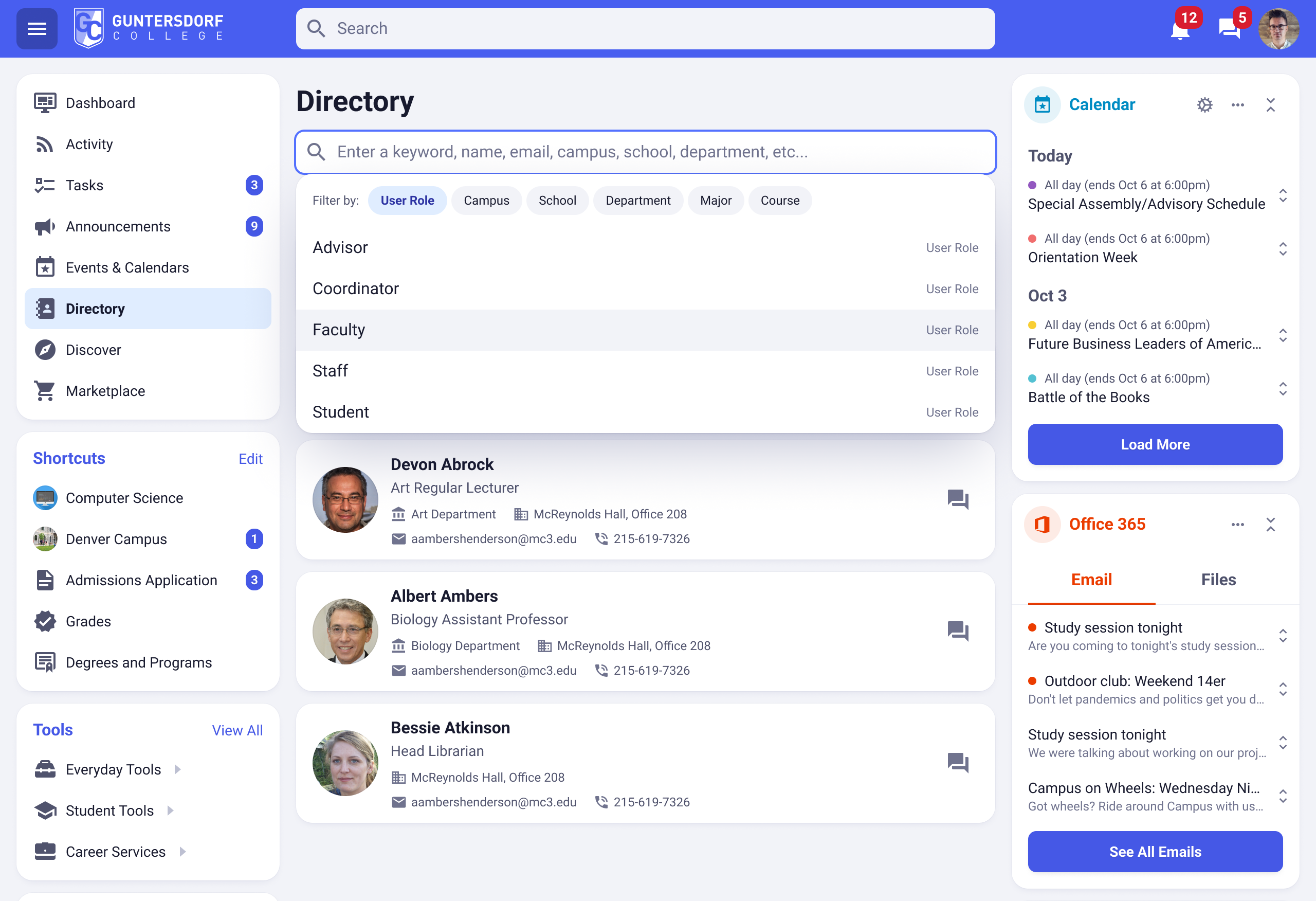There is always a bit of a double-edged sword when it comes to making faculty and staff accessible in higher ed.
On one hand, institutions want to make contacting peers and faculty as easy as possible for students. Yet this accessibility at times poses problems for employees at an institution when they receive a bombardment of emails and calls from spammers.
The last thing an employee wants is to clear out hundreds of emails following a weekend away from their desk. But without providing emails and phone numbers on the public-facing website, students generally lack an easy method of contacting relevant parties at the institution and end up frustrated by the amount of work it takes to simply ask a question.
During the 2023 Spring Summit, Pathify launched a way to make contact information more accessible to those needing the information while decreasing the amount of spam faculty and staff need to handle moving forward. We refer to it as Directory.
Pathify’s Directory allows authorized users to find contact information of any employee or student at their institution through intuitive, easy-to-use search functionality. Reduce spam and increase connectedness by surfacing all relevant contact information in one place.
Admins configure the appropriate data access by role, maintaining appropriate privacy levels while making the campus feel just a little smaller.
Make Contact Information Easily Attainable
Directory helps students, prospects, faculty and staff get more from the Engagement Hub by placing relevant contact information in a place easily accessible while keeping it away from anyone not part of the institution.
Here are the biggest reasons why customers are excited about Directory:
Searchable
Find students or staff by role, course, interest and much more. Directory allows users to find something as routine as the department head’s office or simply connect with those having mutual interests.
Minimize Spam
Directory allows institutions to delete phone numbers and email addresses from the public-facing website, minimizing employees’ exposure to unwanted spam.
Central location for contacts
Instead of forcing students to search the website for important contact information, Directory places information where students already turn for all their other resources.
How Students and Staff Use Directory
Connect with faculty and peers
Pathify’s filtering allows students and staff to forge connections with classmates, co-workers and peers. As a platform dedicated to connecting everything while bringing community forward, filtering makes it easy to find people regardless of your institution’s size.
Locate department offices
Students no longer endure scavenger hunts to find their academic advisor, instructor or a student service. Directory makes it easy to find the building and office where employees work.
Obtain relevant contact information
Find the email or phone number of employees or students all in one place. By housing contact information behind the authentication wall, Directory provides another great hook for users to live in the Engagement Hub — all while ensuring privacy for everyone on campus.
Administrators looking to store contact information in a single source of truth will be delighted by the enhancements Directory makes to their student portal. It helps find people on campus and create connections between individuals at the institution to make the higher ed experience feel a little smaller.
Make the Engagement Hub Your Own
Pathify also released Self-Service Branding at Spring Summit — a way for institutions to configure their portal according to their brand — creating a consistent experience with their other marketing collateral.
Institutions configure their portal according to their brand by customizing colors, logos and default images. This allows institutions to maintain a consistent brand experience without any IT or Professional Services work required.
Stay tuned in the coming weeks for future improvements we’re making to the Engagement Hub. We’re about to revamp the user experience in a way never previously imagined in higher ed.
